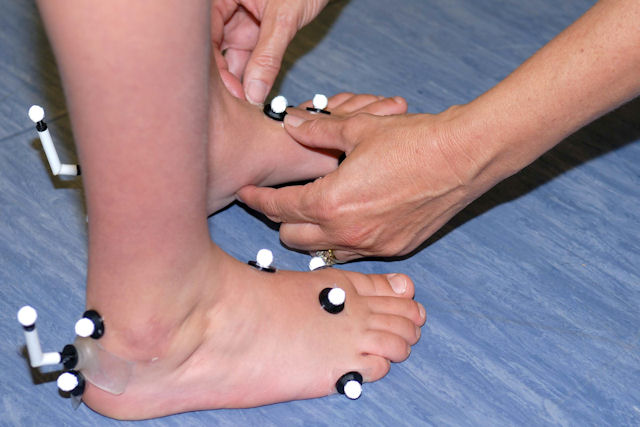Gait analysis uses markers attached to the body to allow motion of the joints to be measured during walking. This is achieved by modeling the body as a series of different 'segments' that are connected by joints.

Historically, the whole foot has been modeled as one, rigid segment. This meant that motion at the joints within the foot was not represented.
In addition, this over-simplification of the foot led to inaccuracies in the measurements.
A more accurate and detailed method for measuring the motion of the foot and ankle was therefore required.
The Oxford Foot Model began to be developed at the Oxford Gait Laboratory, in collaboration with Oxford University, in the late 1990s. Two separate D.Phil. projects were dedicated to this project. The end result was a multi-segment foot model, which allowed detailed analysis of the mechanics of the foot during walking.
Since 2005, we have used the Oxford Foot Model clinically and routinely on patients with cerebral palsy, club foot, toe walkers and other patients with a foot-related question.
It has also been implemented into the software of a leading, motion capture company (Vicon). As a result, it has become one of the most internationally accepted methods for measuring foot motion, and is used extensively for both clinical and research purposes around the world.

